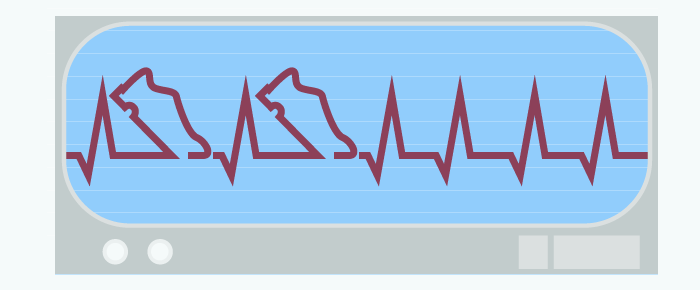How to Measure the 6th Vital Sign: Walking Speed

By now, many of you have heard the term the “sixth vital sign” when referring to walking speed.1 We are all accustomed to taking vital signs to assess the status of our patients, but Fritz and Lusardi remind us that walking speed provides great insight into the functional status of our patients. These authors suggest that walking speed is “almost the perfect measure” and should be considered a functional sixth vital sign with application in determining outcomes like functional status, discharge location, and the need for rehab.2
Benefits of gait speed assessment
Why would an assessment of walking speed be considered the perfect measure? Let’s look at some of the benefits of assessing gait velocity in our patients. Walking speed tests are:
- Reliable, sensitive, specific, and easy to use
- Related to functional ability and balance confidence
- Potentially predictive of future health status, functional decline, hospitalization, discharge location, and mortality
- Reflective of functional and physiological changes
- Discriminative in determining potential for rehabilitation
- Helpful in predicting falls and fear of falling
- Related to quality of life
Just like vital signs, this test should not be used alone. You would not do an examination of your patient and only assess gait velocity! However, as part of your total examination, this is an important piece of the picture of function. It is important because walking speed depends on many factors, such as motor control, muscle strength, sensation, cognition, motivation, and overall health status.
How to measure walking speed
There are several options to assess gait velocity:
You can, of course, do a 10m walk test and there is evidence that this test is reliable. (See full details on this and other gait measures.) However, a short test like this does not assess endurance. Also, there is some evidence in the stroke population, for example, that a 10m walk test may not be the best test to use to judge endurance in this population.2
I think that a timed walk test, such as a 6-Minute Walk Test (6MWT), is a better choice. A timed walk test not only looks at velocity but also endurance, making it perhaps a more functional measure than a short test like 10m walk test. A 6MWT is an easy test to do and there are norms established for many populations.
To ensure you are performing the 6-Minute Walk Test accurately, you need a stop watch and a measuring wheel. You also need to standardize your instructions. For example, you will get different results if you encourage the patient than if you do not. If your patient is not strong enough yet to do a full 6 minute walk test, at least consider asking the patient to walk as long as they can and recording that distance.
I encourage you to start including timed walk tests into your clinical practice. You can do this no matter in what setting you practice. It is a great way to monitor progress and to evaluate the effectiveness of your interventions.
Additional Resources
Additionally, MedBridge offers several free resources around gait and function measurement:
- Fritz S, Lusardi M. White paper: "walking speed: the sixth vital sign". Journal of geriatric physical therapy.2009;32(2):46-49.
- Dean CM, Richards CL, Malouin F. Walking speed over 10 metres overestimates locomotor capacity after stroke.Clinical rehabilitation. Aug 2001;15(4):415-421.

